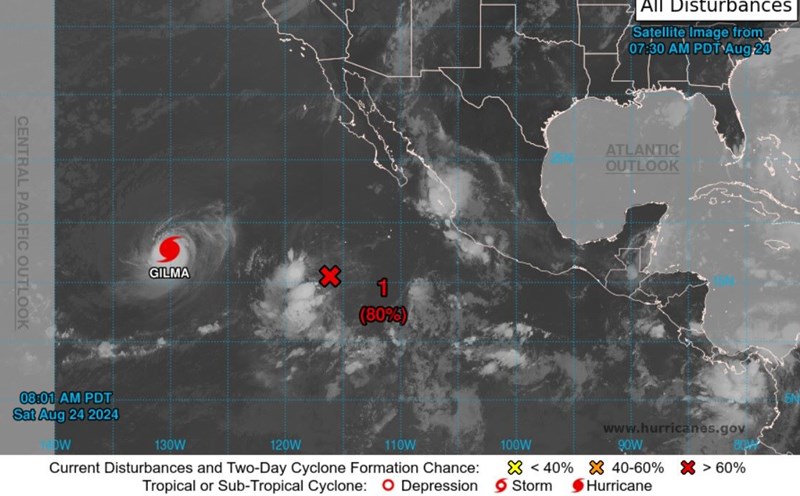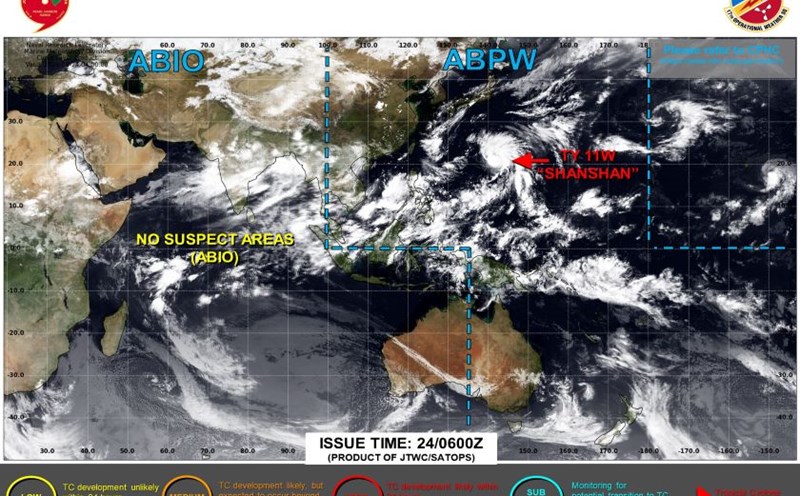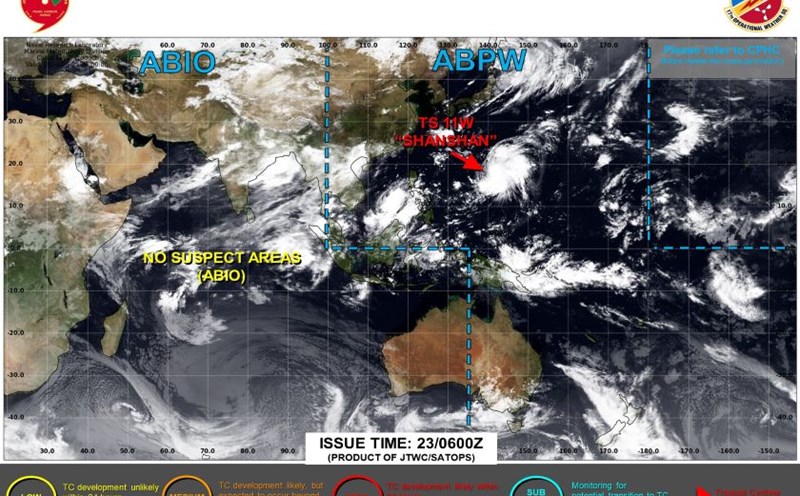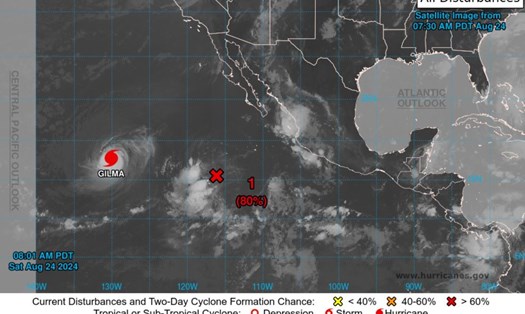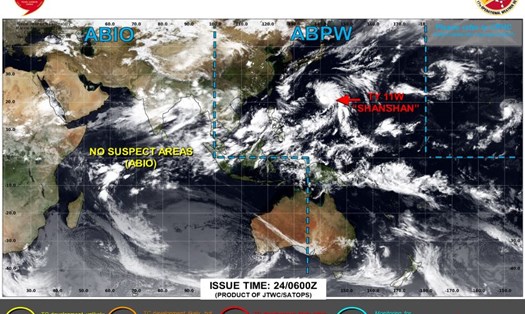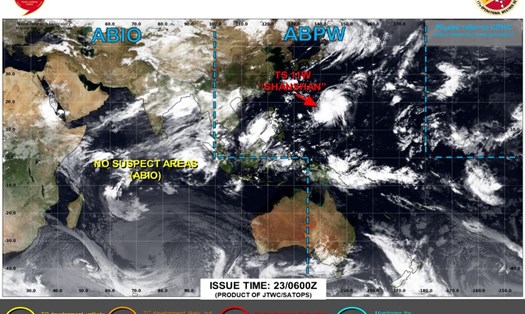Tropical Storm Hone, the first storm to form in the central Pacific since 2019, is headed to Hawaii, USA.
This event increases concerns about the risk of wildfires in the state, which is still recovering from last year's disaster.
According to the latest storm information from the US National Hurricane Center (NHC), storm Hone is currently about 500 km from Honolulu and moving at a speed of about 23 km/h. The storm's strongest sustained wind is 105 km/h.
"The storm is expected to strengthen in the next 24 to 36 hours, with the intensity peaking at near hurricane intensity on August 25 to 26," the storm bulletin stated.
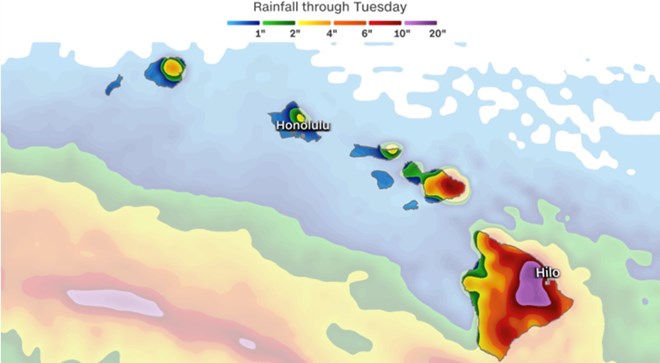
Strong winds caused by the storm have raised concerns about fire risk in some areas of Hawaii, especially where strong winds are not accompanied by rain.
A red alert has been issued for the west and south coasts of each island in the Hawaiian chain, including Lahaina, which was devastated by wildfires last year.
The drought in Hawaii this year is worse than last year's devastating wildfires. As of August 20, moderate or higher drought was recorded in 73% of Hawaii.
Hawaii Governor Josh Green declared a state of emergency on the evening of August 24 due to threats from Hurricane Hone and increased fire risk in the state. The emergency disaster relief phase will continue until August 26.
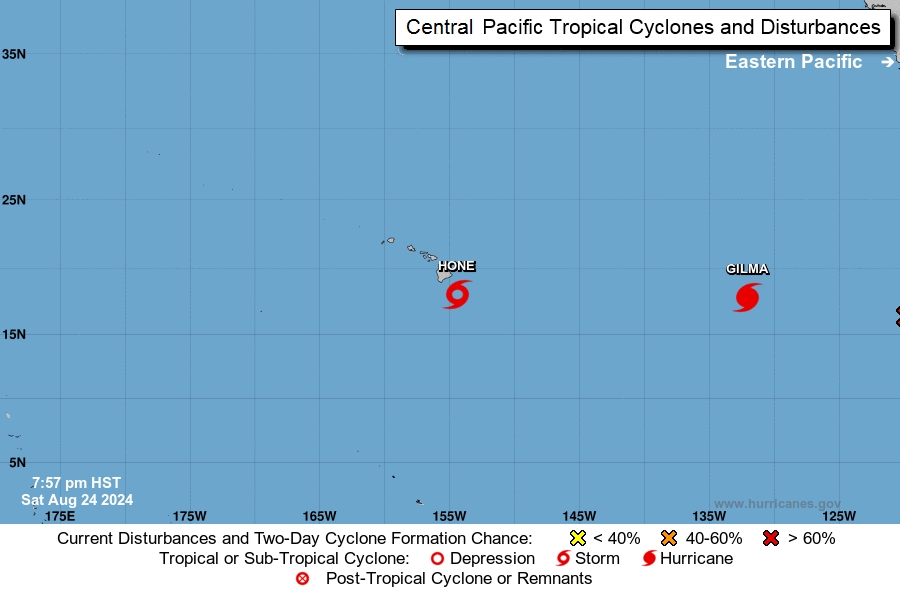
In addition to Hurricane Hone, Hawaii is also being affected by another storm, Hurricane Gilma .
Gilma is currently identified as a category 3 hurricane, forming in the eastern Pacific Ocean and continuing to move west in the coming days.
Hurricane Gilma is forecast to weaken as it approaches Hawaii, but could still have some impact.
Given the complicated weather situation, tourists planning to visit Hawaii need to reconsider their schedules. If it is not possible to postpone or change the schedule, it is necessary to regularly update information about the weather situation and warnings from local authorities.
If evacuation is required, you should strictly follow instructions from authorities and always be ready to prepare for an emergency.
During the storm, limit movement outside unless absolutely necessary. Travelers can save contact information for their country's embassy or consulate for assistance when needed.
With complicated weather conditions and high risk of forest fires, tourists need to be very careful and always be ready for any possible situation to ensure a safe trip.

